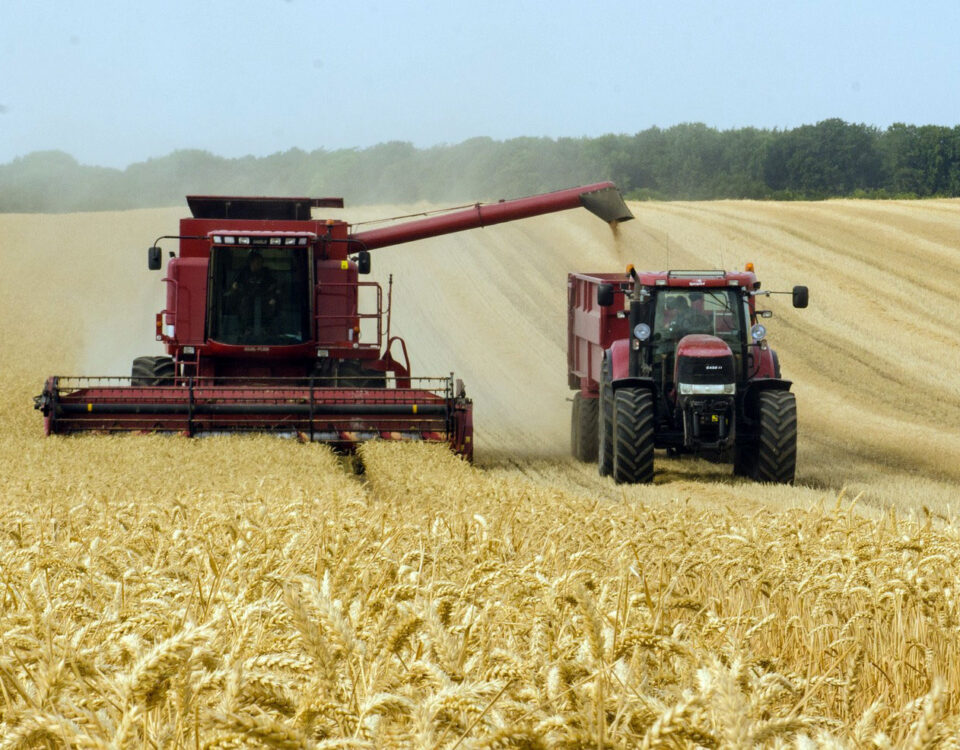Frequently asked
questions - All FAQs
Knowledge Base
In our knowlege base section, you will learn what information we need to get an accurate quote back to you as soon as possible as well as about the prepay system we've set up to give you the best pricing possible.
You will also learn how to get your product in the safest, most economical and appropiate mode of transport and read the very useful fertilizer facts with information on the fertilizers that we broker.
If you have a product you'd like brokered, we may be able to help you. You can contact us at 507-236-1954 to discuss the possibilities.
Frequently asked questions - All FAQs
Most of the time bulk is the cheapest way to go, sometimes however, bulk totes can be more appropriate for your needs at almost as good a price.
The easiest to handle are 50 lb bags, they come on pallets. Some products are available in bulk as well as bulk bags of 1 ton or more and on pallets of 50 lb bags. You can order from the Fertilizer Brokerage quantities of 4 ton or more.
A full truckload will always have a cost/ton ratio which is lower than a partial truckload. One way to save is to order a truckload along with a friend or neighbor who can also use the product and thereby splitting the cost of freight between you.
The brokerage is a service of International Ag Labs located in Fairmont, MN. All orders are prepaid and subject to confirmation. By doing this we can usually get better pricing, but not always... we try our best.
There are several ways you can make your prepayment, but please let us know at the Fertilizer Brokerage that you have decided to make an order based on the quote received and we will give you a purchase order number which will help facilitate the process and thereby confirming it.
- Checks - You can send your checks at the confirmed amount made out to International Ag Labs.
- Bank or Wire Transfer - You would transfer the amount confirmed + a $25 bank fee. If you wish to make a transfer please request our wire transfer information when you place your order.
- Credit Card - For credit cards it is amount confirmed plus an additional 3% credit card fee. No farm plan.
- Bank Demand Draft - Bank demand drafts are great.
Be sure and put the purchase order number on the memo of your check or mention it in your communication to facilitate the transaction.
Payment is made out to:
International Ag Labs
800 W. Lake Ave.
PO Box 788
Fairmont, MN 56031
If you have any questions please call:
Phone 507-235-6909
Fax 507-235-9155
info@aglabs.com
www.aglabs.com
Contact Wendell or MerriDee at the office number above for details or any questions on how to prepay. These prices are only good for a short period of time and subject to change without notice. Orders will be invoiced at price in effect at time of shipment.
When you order a truckload of fertilizer, or even if you just want to know how much a load of a particular fertilizer might cost you delivered, we have to decide the best way to get it to you.
If it is a bulk dry fertilizer, we can haul it in bulk hopper bottom (aka belly dump) trailers at about 25 ton per truckload, this is the best & most economical way to haul bulk. However, if you want the product dumped in a nice neat pile, you would be better served by requesting an end-dump trailer. They cost a little more & deliver a little less (22-23 ton/load) but you will have the pile where you need it. Also some powder fertilizers, such as the Idaho soft rock phosphate are better delivered in an end-dump trailer as it tends to pack & become difficult to unload in a hopper-bottom or belly-dump trailer.
Liquid fertilizers are delivered in tanker trucks and some are even available in totes with capacities ranging from 220 to 275 gallons per tote depending on the product.
Certain dry products that are water soluble are better transported in dry vans to keep them from getting wet. That said, at certain times of the year dry vans are hard to come by. A typical dry van will carry 21-22 ton of product.
Depending on the time of year the region, we can also move these products fairly safely in a well-tarped flatbed trailer. The advantage to this is that a flatbed can easily haul a bigger payload, getting you 23-24 ton of product at sometimes a better cost/ton ratio than the dry van.
One factor that can affect the cost of shipping that you have some control over is timing. If you wait til the last minute to order your fertilizers for the Fall or Spring, you can be sure there are a lot of others trying to do the same.
This is great news for the freight companies as according to the law of supply and demand, the cost of freight just goes up. That is why some of our suppliers offer their products at lower prices in the off season.
Did you know you can usually order gypsum or lime at $4-6/ton and sometimes even $10/ton less in the summer & winter months versus trying to order it in the busy Spring & Fall season? And during those slow summer months, freight prices seem more reasonable and there are fewer delays due to lack of trucks.
Ag Granular
 Sized to blend well with most other agricultural grade nutrient sources and performs well in broadcast spreaders. Typical SGN 325
Sized to blend well with most other agricultural grade nutrient sources and performs well in broadcast spreaders. Typical SGN 325
Turf Grade
 Suitable for blends typically used in horticulture. Also well suited for direct application fertilization, especially slow release. Typical SGN 140
Suitable for blends typically used in horticulture. Also well suited for direct application fertilization, especially slow release. Typical SGN 140
By Jon Frank
For years International Ag Labs has been preaching the merits of potassium sulfate in place of potassium chloride i.e. potash. Here are 7 quick reasons I came up with to support that claim.
1) More Energy for the Money
Commercial fertilizers are concentrated packages of energy. This energy is looked as either producing growth/vegetation or as reproductive/producing seed. Let’s never forget that energy is what grows a crop. Energy is associated with the elements in the fertilizers. Here is the bottom line: One dollar spent on potassium sulfate (K2SO4) will purchase less fertilizer by weight than will one dollar spent on potassium chloride (KCl) but the one dollar spent on potassium sulfate will buy significantly more crop growth energy. Here's why: 47% of potassium chloride is chloride and useless as an element for crop production. In contrast 100% of potassium sulfate is useable by the plant.
2) Lower Salt Index
The salt index is an easy way to judge how damaging a fertilizer is to plant roots and its impact on germination. The higher the salt index the more it can damage roots and kill emerging seedlings resulting in a lower plant population. Potassium sulfate at 46 is less than half of potassium chloride at 116.
3) Better Uptake of Potassium
Proper uptake of potassium requires it to be in the phosphate of potassium form. When there is an excess of chlorides the bonding of potassium with phosphate is blocked. The end result is less potassium uptake into the plant in the preferred form. The high level of chlorides in the soil solution following an application of potassium chloride undermines the very reason it was applied for. The sulfate form does not overwhelm the soil solution with chloride ions and consequently more potassium is taken up by the plant in the phosphate of potassium form.
4) Microbial Stimulation vs. Microbial Suppression
Sulfates have a stimulating effect on the microbial system in the soil, whereas chlorides at high levels are very hard on soil biology and is never recommended by International Ag Labs. In defense of chlorides I must say that a very small amount is actually beneficial for soil microbes. This modest requirement is easily met by the small amount of chlorides present in potassium sulfate. Chlorides usually run 1-2% in potassium sulfate. High rates of chlorides destroy soil carbons.
5) Plants and Soils Need the Sulfur
Most intensely-farmed soils are sulfur deficient. In the past rainfall picked up sulfur out of the air and continuously supplied sulfur with every precipitation. Today with stringent environmental codes and cleaned up smoke stacks the free sulfur is a thing of the past. In order for plants to make oils and sulfur bearing amino acids such as cysteine and methionine the plants need an adequate supply of sulfur in the sulfate form. This is exactly what potassium sulfate supplies.
6) Better Palatability
Forages, vegetables, and fruit taste poorly when the potassium comes from potassium chloride. This happens because, like it or not, chlorides are also taken up by the plants. Apples regularly sprayed with calcium chloride taste like ____. Instead use Amaze for calcium.
7) Less is More
The application of 100 lbs. of potassium sulfate will give a greater plant response than 200 lbs. of potassium chloride. We have found that 100 lbs. of potassium sulfate is quite sufficient for most crops. The only exception to this is high-value, potassium-loving crops such as tomatoes, potatoes, pumpkins, and melons where 200-300 lbs. are used per acre.
One of our suppliers is offering a “low odor” composted chicken manure that is naturally high in calcium. The calcium will help flocculate soils and create a better environment for enhanced root development. The analysis of available NPK is at the rate of 2-4-3.
Healthy soils are the key to producing high yields and this organic composted chicken manure provides the nutrients and organic matter to help improve soil tilth. It really is a great way to reintroduce biologically active organic matter into the soil!
It is OMRI certified and a pretty easy product to spread with a relatively low odor compared to other manures. It is also available in a pelletized form as well as non-pelletized. The pellets cannot be left outside.
Guaranteed Analysis:
Nitrogen 2%
Available Phosphate 4%
Soluble Potash 3%
Calcium 9%
Sulfur 1%
Also contains traces of Mg, Zn, Iron
Derived From: Aerobically Composted Chicken Manure (ACCM), this product is a natural source of high grade nutrients designed to replenish primary and secondary soil requirements. It is rich in organic matter. The screened compost (SS243) is available but usually not on short notice. It is not pelletized. This product is organic. The lead time on this product is a few weeks out. Keep in mind this supplier is only able to produce around 1200 to 1500 tons annually. During Fall & Spring seasons this material gets tight, however and I would anticipate prices going up not down in the future.
Here is what I have learned about spreading blends in a spreader:
The SGN of the turf grade we are offering in the blend is actually 220 SGN, not 140 SGN, so it is a bit bigger but not as big as the ag granular which is 320 SGN. So when combined in a spreader, the two blends will tend to separate somewhat because the MAP will spread up to 40 ft while the smaller SOP granule of the turf grade will only spread about 30 ft. The solution is to drive every 20 ft. rather than every 40 ft. & spread twice. It is good stuff, but it won’t spread as uniformly as if it were the ag granular size.
Any further questions on spreading can be taken by Wendell at 507-235-6909, he is a farmer and knows more than I do!
Q: How much faster will the bulk dry composted break down than the pelletized chicken manure? Also how much is available the first year? At an application rate of 2 ton/acre what percent? How much does one need to apply every year to build up the soil?
A: As a general rule we see approximately 50% availability in the first year. As far as the time it takes for one or the other to break down, we don't think break down time will be much different; same product, just a different form. We do see stronger soil food web lab results in screened compost vs. pelletized.
One ton per acre is the standard rate most use. 2 tons will pose no problems and will likely be beneficial to the soil building process and provide additional nutrition helpful to many crops.
Note: Chicken manure is a very useful fertilizer to use when Phosphorous is less than 100 lbs. per acre on the International Ag Labs soil test.
By Jon Frank
Soft Rock Phosphate is a unique product. It is the clay impurities that were washed off hard rock phosphate. For over 100 years this product has been used to improve soil. In this article I want to highlight 7 benefits that come from using this amazing product.
1. Soft Rock Phosphate improves electromagnetism in soil.
What this means is that it stays put and doesn’t want to move. This property is imparted to soil as a resistance to erosion. I have noticed this even when Soft Rock Phosphate is in the dry powder form. I make a retail product for gardeners called Primal Plant Food. It is a blend of rock powders, biostimulants, carbons, and live microbes. It contains Soft Rock Phosphate. If Soft Rock Phosphate is in the mix of rock powders they quickly set up and resist movement. It becomes difficult to scoop. If it is not in the mix it is easy to scoop. The difference is the electromagnetism that Soft Rock Phosphate imparts. This is exactly what you want to happen in your soil: erosion resistance.
2. Soft Rock Phosphate holds calcium in the root zone.
This is a huge benefit—especially if your soil is generally low calcium. When limestone is applied to soil it has a tendency to sink out of the topsoil and into the subsoil. When calcium is held in the topsoil the biology will digest the limestone to become part of their microbial protoplasm. When they die they release the calcium back to the soil solution as available calcium. If Soft Rock Phosphate is present it will electromagnetically bond with the calcium and hold it up in the topsoil giving biology more time to digest the limestone. No other phosphate fertilizer does this.
3. Soft Rock Phosphate is a colloidal clay.
This means it will bind light sandy soil. In fact, Soft Rock Phosphate is also a soil conditioner. It will actually work like baking soda in pancakes and help fluff the soil up as it improves aeration.
4. Soft Rock Phosphate Supplies Trace Minerals.
Soft Rock Phosphate contains nearly half the elements on the periodic chart. While science debates which ones are necessary don’t you find it ironic that more and more elements are being recognized as either essential or beneficial? I have found that full-spectrum nutrition is always a benefit for plant health in gardens when combined with major and secondary minerals. Wouldn’t this apply to your field crops as well?
5. Soft Rock Phosphate provides long term building of phosphorous.
The vast majority of soils around the world are critically deficient in phosphorous. By adding Soft Rock Phosphate in larger doses, the phosphorous level in soil is built up. Then through microbial digestion this reserve is slowly made available to plants. What you add in year 1 may show availability in year 3. The goal is to keep adding Soft Rock Phosphate until the available phosphorous is around 200 lbs. per acre on the International Ag Labs soil test.
At this level it is safe to remove commercial phosphate from your fertility program. Only do this with annual soil testing to verify phosphorous is well supplied. The ability to take commercial phosphorous out of a fertility program is especially valuable on turf and agriculture around lakes that are sensitive to algae bloom.
6. Soft Rock Phosphate increases exchange capacity.
Because Soft Rock Phosphate is actually a clay it increases exchange capacity. This allows the soil to hold more positive charged nutrients, especially calcium but also potassium, magnesium, and trace minerals. Moist Soft Rock Phosphate can even hold the gaseous form of ammonia. One way to take advantage of this property is to use 10% Soft Rock Phosphate by volume mixed with raw ingredients to be composted. Not only does Soft Rock Phosphate add phosphorus, calcium, silicon, and trace minerals to the finished compost it also has another benefit. Through the process of composting nutrients are liberated into the soluble ionic form. If Soft Rock Phosphate is present the positive charged nutrients will attach to the clay colloids instead of leaching away with moisture.
7. Soft Rock Phosphate has much faster availability than Hard Rock Phosphate.
In fact, I strongly discourage the use of Hard Rock Phosphate unless it is applied to very low pH tropical soils.
While Soft Rock is time released and available over several years, Hard Rock Phosphate takes a generation or two. Here is a technique I use to get Soft Rock Phosphate available even quicker. Use a source of soluble silicon with Soft Rock Phosphate. Soluble silicon increases phosphorus availability and uptake.
Extra Benefits
According to Dr. Carey Reams, an early pioneer in the use of Soft Rock Phosphate, it also contains compound colloids. Dr. Reams explained that these compound colloids resemble a miniature solar system where each “planet” would be associated with a different element. According to his teaching and research these compound colloids could not be destroyed or reduced to ionic forms.
Dr. Reams recommended Soft Rock Phosphate specifically to supply these compound colloids. He repeatedly emphasized that Soft Rock Phosphate has the highest concentration of these compound colloids of all geological resources and that virtually all soils were short on them.
Let’s say a plant needs iron. It will pick up the entire compound colloid because it has iron but everything else comes along with the iron. In this way the plant picks up much more mineral than normal and the produce has greater mineral density.
This theory of compound colloids hasn’t been proven. I cannot prove it either, but I have repeatedly proven that using Soft Rock Phosphate as the primary phosphorous source along with full spectrum nutrition has resulted in outstanding produce flavor and quality.
Application
For phosphorous deficient soils I like to use 2,000 lbs. per acre (or 50 lbs. per 1,000 square feet) as part of a dry broadcast. For extremely deficient soils the application should be repeated the following year. If budget is tight, just use what you can afford. In a dry starter I suggest using 150 lbs. of Soft Rock Phosphate with 150 lbs. of Planters II. The reason for the Planters II is…soluble silicon. This will help speed up the release of the phosphorous.
One other way to use Soft Rock Phosphate is to mix in the powder form with liquid pit manure. The organic acids in the manure will start breaking down the Soft Rock Phosphate into available phosphorous. Putting this slurry into a methane digestor will be even more efficient.
Purchasing
If you would like a semi load quote or are ready to buy please contact Gary Branson at 507-236-1954 or gary@fertilizerbrokerage.com. Gary will be happy to supply both Soft Rock Phosphate and Planters II. To purchase small quantities please call MerriDee at 507-235-6909.
Sign up
Receive alerts on availability of products & price changes.
International Ag Labs
800 W. Lake Ave.
PO Box 788
Fairmont, Minnesota 56031
507-236-1954







